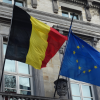By the London Technology Team
EU Commission unveils Digital Single Market
This week the European Commission unveiled its Digital Single Market Strategy, stating that the overall aim of the Strategy is to ‘tear down regulatory walls and to finally move from 28 national markets to a single one’. This comprehensive document sets out 16 actions designed to reverse the fragmentation of internet shopping and other online services across areas including: spectrum, broadband, copyright and reform of telecoms legislation.
Ian Traynor of the Guardian covered the Strategy’s announcement for the Guardian, explaining that the Vice-President of the Commission, Andrus Ansip, had stated that Europe’s GDP could be boosted by £308bn if its digital services market was harmonised.
Is the internet about to run out?
The Royal Society will hold an event on the growing pressure being placed on the UK communications networks. Professor Andrew Ellis will give a talk on how the Internet (digital infrastructure and devices) currently consumes 8% of all energy and will consume all UK power generation by 2035 sat current growth rates.
The event will also discuss the physical capacity of networks, with genuine concerns from industry that fibre optic cables could ‘fill up’ and be physically unable to deliver the packets of data.
Ben Spencer covered the scary story for the Daily Mail.
The social media election?
Once commentators have recovered from today’s shock election results, many will undoubtedly resume debate about whether this was the UK’s first social media election. Facebook have recorded over 52m interactions related to the General Election so far this year and expect politics to be the most discussed topic of the year. Analysts will strive to determine whether the impressive volume of social media activity was genuinely influential or just additional noise.
In an excellent article this week, BBC Trending’s @mwendling considered which criteria to use for determining whether it really was a social media election. As a starting point, Wendling suggested looking at youth turnout and party mobilisation levels.



